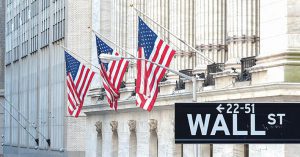BLOOMBERG
Deep in the bowels of Wall Street there’s a surprisingly successful counterfeiting operation underway: The world’s largest banks have created a booming business churning out imitation quant trades. JPMorgan Chase & Co, Goldman Sachs Group Inc and Morgan Stanley are among those hawking the products, which are known by the deceptively dreary name “quantitative investment strategies†(QIS).
It’s the latest chapter in the ongoing demystification of high finance. These trades — numbering in their thousands and supplied to pension funds, family offices and the like — replicate strategies pioneered by Ivy League academics and systematic fund managers like AQR Capital Management.
The twist is that QIS aren’t funds — the banks turn the trades into swaps or structured notes, making them easy to package and sell so clients can pick and choose what they want. It’s a buffet, not a tasting menu.
QIS run the gamut of quant investing styles, which try to make money from market patterns established in academic research, such as the tendency for cheap stocks to outperform or for assets to trade in the same direction for a while. They originally boomed after the financial crisis as banks, squeezed by new regulations, began turning their internal trading strategies into products they could sell.
After enjoying a performance revival in the post-pandemic era along with the broader quant industry, QIS trades have grown steadily in recent years and now command about $370 billion of assets, according to an estimate from consultancy Albourne Partners.
QIS trades come with a handbook about exactly how they work —say, go long S&P 500 futures if they’ve risen above a 20-day moving average, in one simplification. The idea is that makes them transparent, and because investors only buy what they want, they tend to be cheaper than most money managers, proponents say.
At Veritas Pension Insurance in Finland, which runs about $4.3 billion, Chief Investment Officer Kari Vatanen has turned to QIS to have more control of the firm’s money without having to build trading teams from scratch.
Skeptics point out that banks don’t have a fiduciary duty — the obligation to act in a client’s best interest — in the same way a money manager does, and that they don’t focus as much on minimising transaction costs since they also execute the trades. Some also say the strategies are unoriginal and simplified.
According to a survey of 13 banks by Albourne, assets run by the QIS have grown an average 3% annually over the last six years to reach about $370 billion by mid-2022.
While the business is typically seen as a substitute for hedge funds, even the fast money itself is increasingly turning to QIS to quickly add new exposures to their arsenal, according to Mesomeris at UBS and Arnaud Jobert at JPMorgan.
The notional amount linked to JPMorgan’s QIS indexes rose 30% in 2022, after staying largely flat in the three years through 2020.
“You needed to find some diversification and bonds were no longer an answer to that,†said Jobert, co-head of global investible indices at the Wall Street giant. “Things like trend following or rates volatility have been quick and immediate overlay solutions.â€
Given the opaque nature of the business and the scope of the trades it’s hard to generalize returns, but data provider Premialab estimated 61% of the roughly 4,000 strategies it tracks made money in 2022, the highest proportion since at least 2016. More than 1,000 new QIS were also created — the most in six years.
This year has been a more mixed bag as investor attention shifts from inflationary fears to the potential for a recession and rate cuts. A Bloomberg-GSAM index of cross-asset risk premia is down 1.5% so far in 2023. QIS aren’t immune to the criticisms levelled at the type of systematic hedge fund that popularised many of these strategies.
 The Gulf Time Newspaper One of the finest business newspapers in the UAE brought to you by our professional writers and editors.
The Gulf Time Newspaper One of the finest business newspapers in the UAE brought to you by our professional writers and editors.
